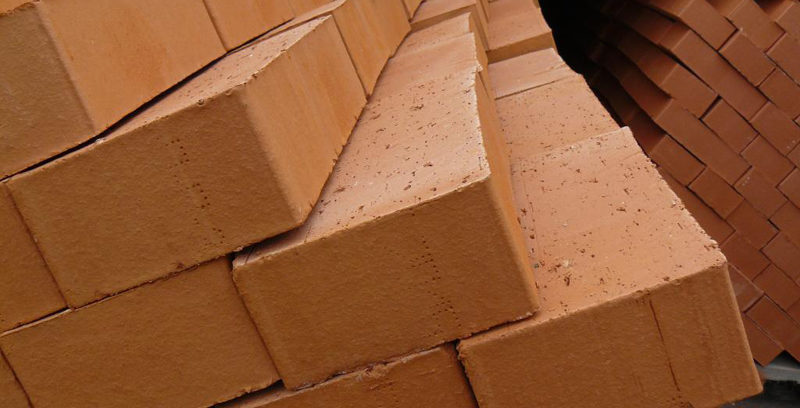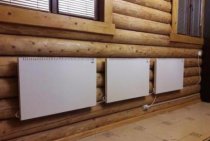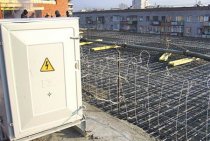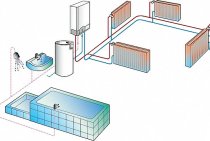Preparation of a mortar for laying a potbelly stove with bricks

The preparation of a solution for furnace work is prepared from a mixture of clay, sand and water in a proportion of approximately 1 part of clay to 3-4 parts of sand.
Traditionally, a kiln mortar is prepared from a mixture of clay, sand and water in a ratio of approximately 1 part clay to 3-4 parts sand. This ratio may vary depending on the quality of the clay. The fatter the clay, the more sand is required. There are no strict recommendations; in each case, the master prepares the solution empirically. The mortar in the finished masonry should not crack and crumble.
Too greasy (plastic) solution, although it is easily laid in an even layer and without cracks, shrinks significantly when dried, and therefore cannot be used for furnace work. The solution should not be too thin (low-plastic), since although it does not shrink, it crumbles out of the seams when it dries. The more sand in the masonry mortar, the less plastic it is. Sand should be used fine and clean, sifted through a sieve with cells of 1.5 x 1.5 mm.
Water for the solution is used clean, without chemical and mechanical impurities. If there is a large amount of mineral salts in the water, then subsequently stains and stains will appear on the masonry, which will be difficult to get rid of even with the help of whitewashing or painting. The amount of water should be such that a ball or tourniquet can be rolled out of the solution, but at the same time it should be soft.
To prepare the solution, fill the clay with water for 2-3 days. If the clay is dry, then the ratio of its amount to the amount of water should be 1:2. If the clay is wet - then 1: 1. It must be periodically stirred and kneaded so that the mass is homogeneous. Then you need, gradually adding sand, knead the previously prepared solution.
It is not difficult to check the suitability of the solution for an experienced stove-maker. He can simply take a portion of the finished solution and determine its quality by touch. It should be uniform, soft enough and moderately moist. If there is no experience, the suitability of the solution can be determined in several ways. Here is one of them: you need to roll up a sausage tourniquet about 20 cm long and 1.2-1.5 cm thick and roll it into a ring with a diameter of 5-6 cm. If a small number of small cracks appear in this case, the solution can be considered suitable. The absence of cracks indicates its excessive fat content, and large cracks and gaps are a sign of a too lean solution.
Cover sequence
Scheme of an iron furnace lined with bricks.
Before overlaying the stove with bricks. you need to make sure that the floor can withstand such a load. Without a foundation, stoves weighing up to 800 kg can be installed on a wooden floor. Of course, this is subject to the good condition of the beams and lag. A sheet of steel is placed on the floor, a layer of brick is placed on it, and then a furnace is installed. If the floor is wooden, then a sheet of asbestos must also be placed under the metal. The lining of the steel sheet should protrude in front of the front wall of the stove by 30-40 cm, in order to prevent hot coals from falling onto the unprotected floor. On the walls of the room, located next to the stove, you also need to attach metal sheets with an asbestos cement backing. It should be noted that a gap must be left between the lining of the stove and the wall of the room.
There must be a gap of 30-50 mm between the metal wall of the stove and the masonry. This must be done because metal and brick have different temperature coefficients of linear expansion. When heated, metal expands much more than brick, therefore, if the potbelly stove is laid close, without a gap, the stove may collapse. The free space between the metal wall and the brick is also necessary for air convection.
As a rule, the stove is lined with 1/2 bricks.Making the wall thicker does not make sense, since it will take too much time and fuel to warm up the thick brickwork. Before you start lining the potbelly stove, you need to make a markup, taking into account the gap. Mark the outer contour of the furnace. The first row is made solid. The thickness of the mortar between the bricks should be tried to be no more than 0.5 cm. In the second row, 1-2 holes are made on each side of the stove, depending on the size of the stove. The length of the holes is 1/2 brick. All subsequent rows are solid, like the first row.
The front wall of the stove on the side of the firebox must be lined with ease of use - the door must open and close freely. Here you can show your imagination and perform curly masonry. At the top of the opening above the door, you need to lay a metal corner on which the upper rows of bricks are laid out. The upper part of the stove can be overlaid at your discretion, since it does not play a significant role technically, performing mainly a decorative function. The top of the furnace can be made in the form of a vault or made flat.
After the lining is completed, the mortar in the seams must dry. This will take 1-2 days. After that, the surface of the masonry must be cleaned with a drill with a nozzle in the form of a brush from excess mortar. Then the masonry is washed with soapy water with a brush with stiff bristles.
What material to choose to overlay a potbelly stove with bricks
Ordinary brick for these purposes is not suitable
It is important to use a material that can withstand temperature changes.
For work, a special oven brick is suitable. It can withstand temperatures up to a thousand degrees. Is it possible to overlay a potbelly stove with ceramic bricks? Yes, such a brick is also suitable, it can withstand temperatures a little less, up to 800 degrees, which also meets the established requirements.
Please note that the brick must be solid, because
voids under the influence of high temperatures will lead to the destruction of the brick.
As for the surface of the brick, it can be smooth or textured. If, according to the plan, there is further brick finishing, then it is better to stop at a smooth version, but if there is no additional coating, then textured brick will help complete the interior design.
Do not save on quality, choose the best brick! Poor-quality brick may not withstand temperature extremes, high humidity, reducing all efforts to lay bricks over the potbelly stove to nothing.




